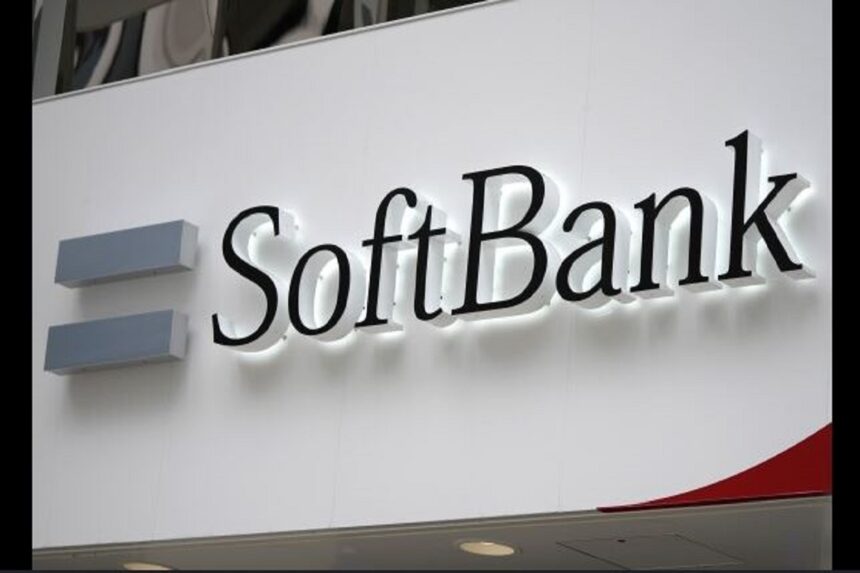Japanese telecommunications and IT giant, SoftBank, has made a landmark pledge to invest $100 billion in the United States, signaling a major commitment to the country’s economic growth. This announcement, made at Mar-a-Lago in Florida on December 16, 2024, comes during the presidency of Donald Trump, echoing SoftBank’s previous investment promises made during Trump’s first term. The focus of this new investment will center on cutting-edge sectors such as artificial intelligence (AI), emerging technologies, and energy infrastructure. But what does this mean for the future of the tech industry, data centers, and other sectors within the US economy?
A Recap of SoftBank’s Previous US Investment Commitments
In 2016, SoftBank CEO Masayoshi Son pledged a $50 billion investment in the United States following Donald Trump’s election. This commitment was aimed at fueling job creation and innovation, with promises to create 50,000 jobs. The new $100 billion pledge doubles that original amount, with Trump highlighting that the investment would help foster the development of AI and other futuristic industries within the US.
However, questions remain about the actualization of the job creation goal set in 2016. Media outlets have raised concerns about whether SoftBank successfully met its previous job creation targets, leaving some to wonder how tangible this new pledge will be. Nevertheless, the announcement signifies SoftBank’s ongoing belief in the potential of the American market and its commitment to technological advancements.
Why the $100 Billion Investment Matters
The $100 billion investment is set to make waves across several key sectors:
- Artificial Intelligence: SoftBank’s commitment to AI aligns with broader trends in the global tech landscape, as AI continues to reshape industries ranging from healthcare to finance. The influx of investment is expected to fuel innovation in AI chip design and cloud computing technologies, placing the US at the forefront of this rapidly evolving field.
- Energy Projects and Data Centers: In addition to AI, the investment will flow into energy projects and data centers. As more companies look to scale their operations and handle increasing data demands, SoftBank’s capital will likely help build the infrastructure needed to support this growth. This could have a direct impact on data center development, cooling solutions, and sustainable energy practices.
- Semiconductors and Chip Design: SoftBank has also indicated that part of the investment will be directed towards chip design, including investments in its British subsidiary, Arm Holdings, and other chip-related ventures. This could have significant implications for companies looking to strengthen their position in the semiconductor market, competing with industry giants like Nvidia.
SoftBank’s Strategy: Leveraging Existing Ventures
SoftBank is no stranger to large-scale investments. The company previously raised capital through its Vision Fund, which received backing from major investors like Saudi Arabia, Apple, and SoftBank’s own portfolio. These funds have been used to acquire stakes in high-profile companies such as Uber, WeWork, and DoorDash.
In the context of this new investment pledge, sources suggest that SoftBank may look to leverage its recent acquisition of Arm Holdings and its stake in Izanagi, a venture focused on AI chip design. This strategy could allow SoftBank to tap into the growing demand for specialized chips in industries like AI and machine learning.
What Does This Mean for the US Tech Ecosystem?
SoftBank’s investment plans come at a pivotal moment for the US tech ecosystem. With the rise of AI and edge computing, there is increasing pressure for companies to invest in the infrastructure that supports these technologies. The infusion of $100 billion into the country could provide a much-needed boost to areas such as:
- Data Center Expansion: As more data is generated and processed, there is a growing need for state-of-the-art data centers capable of handling this volume. SoftBank’s investment could accelerate the development of next-generation data centers focused on performance, energy efficiency, and sustainability.
- AI Innovation: AI is revolutionizing industries, and SoftBank’s investment could help fund projects related to AI research, development, and application. This could lead to the creation of cutting-edge AI products, from machine learning models to AI-powered hardware solutions.
- Talent and Jobs: While the exact number of jobs to be created remains unclear, SoftBank’s focus on AI and related sectors suggests that the company will be investing in skilled talent to build out these high-tech industries in the US.
The Role of Trump’s Presidency in SoftBank’s Investment Strategy
At the December 16 announcement, President Trump emphasized that his administration would offer fully expedited approvals for companies investing more than $1 billion in the US, including environmental approvals. This suggests that SoftBank’s decision to invest in the US may be influenced by favorable regulatory conditions under Trump’s leadership.
However, critics of the deal have raised questions about the actual benefits of expedited approval processes and whether SoftBank’s plans will result in substantial job creation. Given SoftBank’s previous history of raising money from international investors, there are also concerns regarding how the company will fund this new venture.
SoftBank’s Long-Term Vision: Arm and AI Chips
A key part of SoftBank’s strategy revolves around Arm Holdings, a semiconductor company acquired by SoftBank in 2016 for $32 billion. Arm designs chips that power devices ranging from smartphones to data centers, making it an essential player in the tech industry. With increasing demand for specialized AI chips, SoftBank’s involvement in the chip design sector is expected to play a pivotal role in the development of next-generation technologies.
Reports suggest that SoftBank may also look to further invest in companies like Graphcore, a British AI chip designer acquired in 2024. This acquisition further aligns with SoftBank’s goal to bolster its position in the rapidly expanding AI chip market.
Challenges and Considerations
While the $100 billion investment is an ambitious move, there are several challenges to consider:
- Execution of Job Creation: SoftBank has made bold claims regarding job creation in the past, and it remains unclear whether these targets were fully met. The same questions will likely surface about the new pledge, with industry watchers keenly tracking SoftBank’s progress.
- Funding and Capital: With $29 billion in cash on its balance sheet, SoftBank faces questions about how it will fund this new wave of investments. As previously mentioned, SoftBank raised capital through the Vision Fund, and it’s possible that a similar strategy will be employed to secure the necessary funding.
- Economic Conditions: The US economy is navigating a period of uncertainty, with inflation concerns and a shifting global landscape. How SoftBank adapts to these challenges will be crucial in determining the success of its investment strategy.
FAQs
1. How will SoftBank’s $100 billion investment impact the AI industry in the US?
SoftBank’s investment is expected to fuel innovation in AI by supporting AI chip design, machine learning models, and infrastructure projects. This could lead to advancements in AI technology and strengthen the US’s position as a leader in the field.
2. Will SoftBank’s investment lead to the creation of 100,000 jobs in the US?
While SoftBank has pledged to create 100,000 jobs, it remains to be seen whether this goal will be fully realized. The company’s previous promises regarding job creation were met with skepticism, so industry watchers will closely track developments.
3. What role will Arm Holdings play in SoftBank’s investment strategy?
Arm Holdings, a leading chip designer acquired by SoftBank, is expected to be a key player in the company’s investment plans, particularly in the AI chip market. SoftBank may leverage Arm to develop next-generation semiconductor technologies.


















